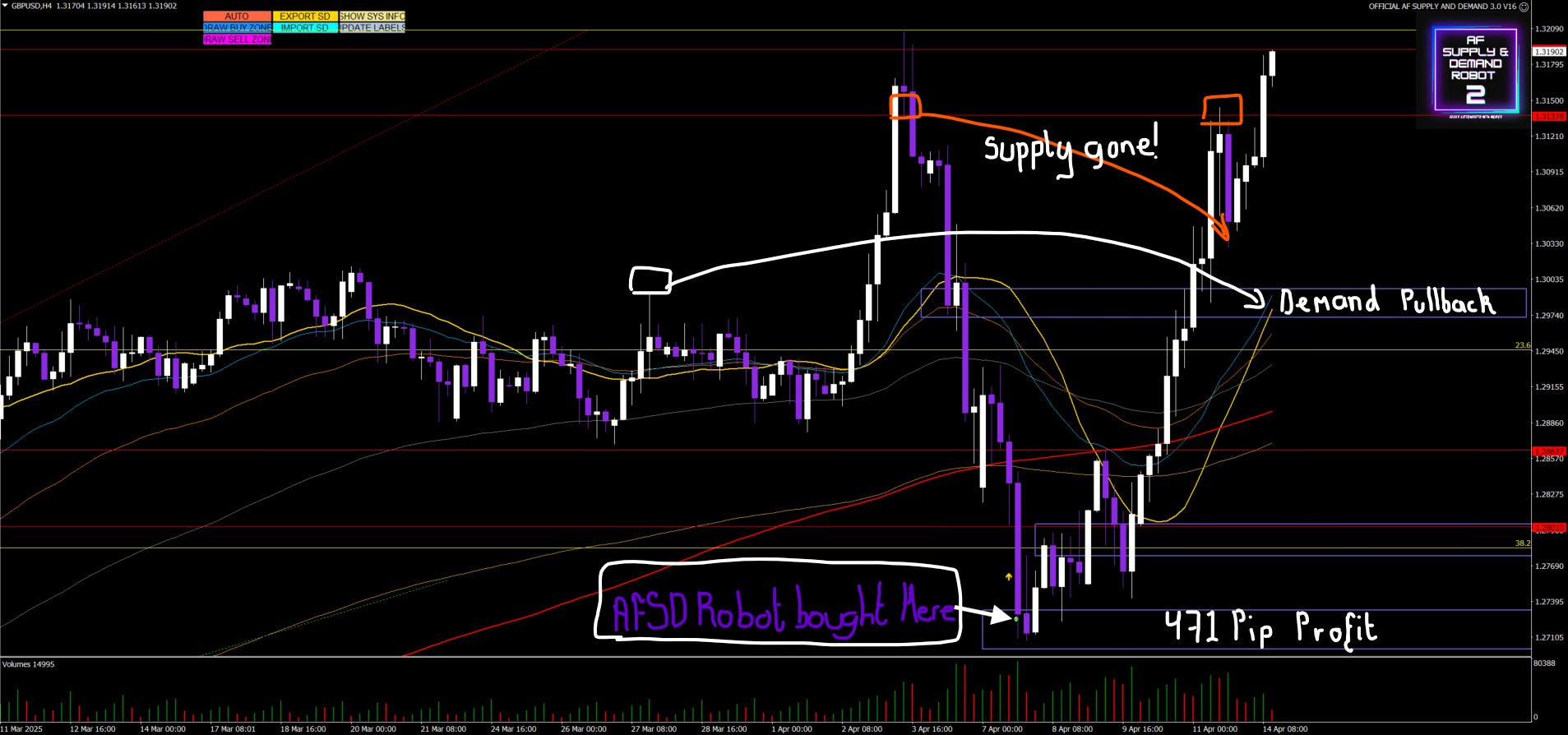Your cart is currently empty!
Tag: Forex Trading

6 Months to a New You: The Transformative Power of Consistency
What if everything you’ve ever dreamed of—better health, more money, stronger relationships, a thriving career—was only six months away? It might sound too good to be true, but here’s the catch: it is possible, if you commit to consistency.
This isn’t about working harder. It’s about showing up every day with small, repeatable actions that lead to big, lasting change.
Let’s break down how six months of consistent effort can be the single most transformative decision you make.
The Hidden Power of Daily Habits
The Compound Effect of Small Actions
Imagine investing just 1% more effort every day. Over six months, those tiny efforts stack up to create exponential growth. This idea, known as the compound effect, shows how even the smallest habits—like drinking more water, walking 10 minutes a day, or reading a few pages—can lead to profound changes.
Real-Life Examples of Life-Changing Habits
Waking up 30 minutes earlier to journal or plan your day Saving $5 daily instead of impulse buying coffee Replacing 30 minutes of screen time with reading or meditation
None of these sound hard—but done daily, they change your mindset, routines, and ultimately your outcomes.

Why Six Months Is the Magic Window
Psychology Behind the 6-Month Rule
Psychologists often talk about how it takes 21 days to build a habit and 90 days to make it a lifestyle. So what happens in six months? That’s when the new you becomes the default you.
By six months, your habits are automatic, your environment supports your goals, and your mindset is no longer questioning the process.
Habit Formation and Behavioral Science
The brain thrives on patterns. Repetition and reward strengthen neural pathways. Six months gives your brain time to fully adapt and automate positive behaviors.
What Can Really Change in Six Months?
Health & Fitness Transformations
Lose 20-30 pounds through daily walks and mindful eating Build muscle and energy with three workouts a week Improve sleep and mental health with better routines
Financial Improvements
Pay off thousands in debt by tracking expenses and sticking to a budget Build a $1,000 emergency fund Launch a side hustle that becomes a steady income stream
Career or Business Growth
Start a blog, podcast, or YouTube channel Upskill through daily learning on platforms like Coursera or LinkedIn Learning Network consistently and land job interviews
Mental Health and Mindset Shifts
Develop confidence through affirmations and goal setting Reduce anxiety with meditation and therapy Reframe limiting beliefs that hold you back.

The Role of Consistency in Achieving Success
Consistency vs Motivation
Motivation is fleeting. One day you have it, the next you don’t. But consistency? That’s the system you fall back on. It’s the decision to keep going, even when the feeling fades.
Building Discipline and Structure
Consistency breeds discipline. Discipline gives structure. Structure gives freedom.
How to Stay Consistent When Motivation Fades
Systems Over Willpower
Willpower is finite, but systems are sustainable. Create checklists, routines, and rituals that guide your day.
Tracking Progress and Rewarding Yourself
Use a habit tracker, journal, or app like “Habitica” or “Streaks.” Celebrate small wins: a new book finished, a week of workouts completed, or $100 saved.
Step-by-Step Plan to Transform Your Life in 6 Months
Month 1: Foundation & Clarity
Start with clarity. Ask yourself:
What do I want to change? Why does this matter to me? Who do I want to become?
Create SMART goals (Specific, Measurable, Achievable, Relevant, Time-bound) and break them down into weekly actions. Begin tracking your habits with a simple journal or an app like Habitica, Streaks, or Notion.
Focus areas:
Sleep schedule Hydration 30 minutes of daily movement 1% daily progress
Month 2: Build Routines That Stick
Consistency comes from systems. Set up routines for morning and night that reinforce your goals. Automate positive behaviors—like meal prepping on Sundays or scheduling workouts ahead of time.
Daily practices to include:
10 minutes of journaling Reading 10 pages of a book Weekly goal review Limiting distractions (e.g., social media detox)
Month 3: Keep Momentum with Midpoint Motivation
This is where people usually quit—but not you. Revisit your goals and assess progress. Make adjustments if necessary. Double down on what’s working.
Pro tip: Create a “done list” of accomplishments to keep yourself motivated. It’s a game changer for tracking progress.
Month 4: Double Down on Discipline
Now that your habits are formed, it’s time to refine your discipline. Cut out activities that drain energy and protect your focus like it’s gold.
Strategies:
Time-blocking your calendar Saying “no” to distractions Practicing deep work (try the Pomodoro Technique) Reflecting on how far you’ve come
Month 5: Growth Mode Activated
By now, your confidence is rising. You’ve proven to yourself that change is possible. Use this momentum to scale your efforts. Maybe you start a passion project or increase your financial savings.
Growth tactics:
Learn a new skill or enroll in a course Increase intensity in workouts Improve diet and meal variety Join a mastermind or accountability group
Month 6: Transformation Realized
This is where the magic happens. You’re not just doing different things—you’ve become someone new. Look back at Month 1. You’ll be amazed at how far you’ve come.
Celebrate it. Share your story. Inspire others. And most importantly, set new 6-month goals.

Common Pitfalls and How to Avoid Them
1. All-or-Nothing Mentality
Missed a day? That’s okay. What matters is you come back. Progress isn’t linear—don’t let one bad day derail the entire journey.
2. Comparing to Others
Your journey is yours alone. Stay focused on your progress. Social media can be misleading—most people only share their highlight reel.
3. Burnout
Pace yourself. Build rest and fun into your routine. Without joy, consistency becomes a chore.
The Science Behind the 21/90 Rule
According to behavioral psychologists, it takes about 21 days to build a habit and 90 days to turn it into a permanent lifestyle. Six months gives you twice that buffer, allowing for setbacks, growth, and sustainability.
This rule is the perfect framework to anchor your transformation.
Case Studies: People Who Changed Their Lives in 6 Months
Jasmin – Lost 40 Pounds and Gained Confidence
Through simple meal prepping, 4 weekly workouts, and journaling, she transformed her health and self-image.
Carlos – Paid Off $10,000 in Debt
He tracked every dollar, automated savings, and picked up freelance work. In six months, he was debt-free and empowered.
Amina – Launched a Successful Online Business
Using consistent blogging and email marketing, she built a brand that now earns her passive income—all from scratch.
Morning Routines That Build Long-Term Consistency
Wake up at the same time daily Hydrate and stretch for 5–10 minutes Review your goals Practice gratitude or journaling Tackle the hardest task first (MIT: Most Important Task)
Evening Rituals to End the Day Strong
Unplug 1 hour before bed Reflect on wins and lessons of the day Set intentions for tomorrow Read something uplifting Prioritize sleep quality (cool room, dark, quiet)
The Role of Accountability and Support
Accountability boosts your consistency by over 65%. That’s huge.
Ways to stay accountable:
Join an online challenge or coaching group Partner with a friend Hire a mentor or coach Share your journey publicly (blog, YouTube, social)
The Mindset Shift: From Short-Term to Long-Term Thinking
Six months feels far away—until it isn’t.
Shift your mindset to play the long game. Think like a gardener, not a gambler. Plant the seeds, water them, and watch them grow.
Digital Detox and Focus Techniques
Limit phone use to specific hours Use app blockers like Freedom or Forest Practice mindfulness or meditation daily Replace screen time with creation or connection

FAQs
Q1: Is six months really enough time to change my life?
Yes! With consistent effort, six months is enough to see visible and meaningful results in health, finances, mindset, and more.
Q2: What if I miss a day or fall off track?
Don’t worry. Get back on track the next day. Progress is about trends, not perfection.
Q3: How do I stay motivated for six months?
Focus on systems over motivation. Create routines and use accountability partners or apps to stay engaged.
Q4: What are the best tools for tracking progress?
Habit-tracking apps, bullet journals, spreadsheets, or vision boards work well. Choose what suits your style.
Q5: Can I work on multiple goals at once?
Yes, but start small. Focus on 1–2 core goals at a time to avoid overwhelm.
Q6: What’s the most important thing to remember?
Consistency beats intensity. Daily small actions matter more than big bursts of energy.
Final Thoughts: Start Today, Not Tomorrow
You’re only six months away from changing your life.
You don’t need to wait for the new year, the perfect moment, or a sign from the universe. The sign is this article. Start now. Start small. Stay consistent.
Because six months from now, you’ll either be glad you started—or wish you had.

How Passive Ambition is Keeping You Stuck: Break Free With This Simple Formula
What Is Passive Ambition?
You dream of freedom, success, and fulfillment. You want the big life—the business, the flexibility, the wealth. But something’s holding you back. You stay in your comfort zone. You avoid risks. You wait for the “right” time. Sound familiar?
That’s Passive Ambition.
Passive Ambition is the illusion of desire without the commitment to act. It’s dreaming of more while playing it safe. It’s craving change but avoiding uncertainty. It’s wanting the rewards without stepping into discomfort.

And here’s the catch:
The same instincts keeping you safe… are also keeping you small.
The Real Cost of Playing It Safe
So many people unknowingly follow a blueprint for stagnation. It feels like they’re being smart—saving money, avoiding mistakes, staying “secure.” But in reality, this strategy has a steep hidden cost.
Let’s break it down.
Step 1: Don’t Take Any Action
Play it safe. Do the minimum. Show up, collect the paycheck, and let someone else decide your path.
Don’t raise your hand. Don’t share your ideas. Don’t take initiative. Wait for “one day” to finally do the thing.
The problem? “One day” is the most expensive day of the year.
The more you delay action, the more you pay in lost time, lost momentum, and lost growth. There’s even a name for it:
The Price of Inaction.
Inaction compounds. It silently costs you opportunities, confidence, and clarity.
Step 2: Take Action You Barely Understand
Some people recognize they’re stuck and try to break out—but without direction. They confuse action with progress. They mistake movement for momentum.
Here’s what that looks like:
Buying a business you’ve never seen Jumping at an investment you can’t explain Launching a product without a plan Switching careers without strategy
Ambition without understanding isn’t bold. It’s reckless. And recklessness doesn’t make you rich—it makes you broke.
The Formula That Actually Works
So if inaction keeps you small and reckless action makes you vulnerable… what’s the alternative?
Smart Risk.
Here’s the winning formula:
SMART RISK = (Skill + Preparation) × Action
Smart risk means taking calculated steps.
You study the terrain. You build your skills. You prepare. Then, you move decisively.
You don’t need all the answers, but you do need a plan.
You’re not guessing. You’re betting wisely.
Why Smart Risk Is the Only Way Forward
Every successful entrepreneur, leader, and creator you admire once looked foolish. They started without approval. They took chances. And they often looked like they were flying blind.
But here’s what they had: conviction, clarity, and courage.
They built when no one was watching.
They risked failure to create freedom.
They felt the fear… and moved anyway.
You don’t need a perfect plan. You need motion.
The World Is Built By Movers
The world isn’t built by those who wait for permission—it’s built by those who just start.
No applause. No guarantees. No warm-up round. Just movement.
And movement leads to momentum.
That first awkward video.
That clunky first draft.
That nerve-wracking pitch.
Each one moves you closer to mastery.
Here’s the Truth Most People Avoid
No one’s coming to save you.
Not your boss. Not the economy. Not your partner. Not your dream job.
But here’s the flip side:
You might not need saving at all.
What if everything you need to grow is already inside you?
What if the real problem isn’t your job, your timing, or your tools…
What if it’s your unwillingness to bet on yourself?

5 Signs You’re Stuck in Passive Ambition
You wait for the “right time” to start You daydream but rarely execute You research endlessly but avoid decisions You envy others but justify your inaction You start things impulsively and give up quickly
3 Ways to Embrace Smart Risk Today
Invest in Skill Read. Practice. Take courses. Build experience that compounds. Make a Simple Plan Break your big goal into smaller, logical steps. Think direction, not perfection. Take One Aligned Action Don’t try to change your life in one weekend. Take one meaningful step today. Then another tomorrow.
Frequently Asked Questions
1. What is passive ambition?
Passive ambition is the desire for success without the willingness to take meaningful risks or actions. It’s dreaming of more but never committing.
2. How do I know if I’m being passively ambitious?
If you find yourself constantly saying “one day” or hesitating to act due to fear or overthinking, you’re likely stuck in passive ambition.
3. What is the difference between smart risk and reckless risk?
Smart risk involves preparation, skill, and thoughtful action. Reckless risk lacks strategy and is driven by impulse or desperation.
4. Why is inaction so costly?
Inaction leads to missed opportunities, wasted time, and decreased confidence. Over time, it compounds and becomes harder to escape.
5. Can I succeed without taking big risks?
Not necessarily. You don’t need to take reckless risks, but meaningful growth requires stepping outside your comfort zone and betting on yourself.
6. How can I start taking smart risks today?
Begin with clarity. Choose one goal, build the necessary skill, make a plan, and take small, consistent action. Focus on progress, not perfection.
Final Thoughts: You’re More Capable Than You Think
The scariest part of this journey is realizing no one’s coming to save you. But the best part?
You don’t need them to.
When you stop waiting, start preparing, and move with intention, everything changes.
You reclaim your power. You grow. You thrive.
It’s not about being fearless.
It’s about choosing courage—again and again.
What would your life look like if you gave yourself permission to go all in?
Market Insights: Key Trends Shaping Forex, Stocks, and Crypto For The Week Ahead (January 19, 2025)
The financial markets continue to show interesting movements as traders react to economic data, political developments, and technical setups. Today, we’ll dive into some of the most trending topics in the trading world, including stock market performance, forex positioning, and cryptocurrency movements.
Congressional Stock Trading Performance in 2024
A recent report has revealed that, as in previous years, certain U.S. politicians have outperformed the market in 2024. This ongoing trend has raised questions about transparency and insider knowledge, as many of these lawmakers continue to generate significant returns through strategic investments. Key sectors that have shown strong performance include:
- Technology Stocks: Politicians have shown a preference for major tech companies such as Apple (AAPL) and Microsoft (MSFT), which have continued to rally despite global economic uncertainties.
- Defense Contractors: With geopolitical tensions escalating, defense stocks like Lockheed Martin (LMT) and Northrop Grumman (NOC) have seen increased interest.
For traders, monitoring Congressional stock disclosures can provide insights into potential market trends and opportunities.
Forex Market Insights: CFTC Data Review
The latest Commodity Futures Trading Commission (CFTC) positioning report for the week ending January 14, 2025, provides valuable insights into trader sentiment. Some key highlights include:
- Japanese Yen (JPY): Net short positions have risen to 29,411 contracts, indicating bearish sentiment. This trend suggests traders are favoring riskier assets over the safe-haven yen.
- Euro (EUR): The euro saw a net short position of 60,397 contracts, reflecting continued concerns about economic growth in the Eurozone.
- British Pound (GBP): In contrast, the pound has recorded net long positions, showing optimism about the UK’s economic outlook and potential interest rate adjustments.
Trading Implications:
- Short-term traders may look for breakout opportunities in USD/JPY as bearish momentum builds.
- The EUR/USD pair remains under pressure, with resistance levels likely to hold unless economic data improves.
- The GBP/USD pair could see bullish momentum as traders anticipate a more hawkish Bank of England.
Stock Market Movers and Shakers
Recent market activity has seen several notable stocks capturing trader attention. Among the most active and trending stocks are:
- Crown Electrokinetics Corp. (CRKN): With 764 million shares traded and a 56.84% price surge, this stock has demonstrated high volatility and strong upward momentum.
- Walmart (WMT) & Target (TGT): Retail giants have rebounded amid positive consumer spending data.
- Intel (INTC): With recent technological advancements, Intel has shown resilience and attracted investor interest.
Key Strategies for Stock Traders:
- Focus on volume spikes as they often precede price movements.
- Utilize technical indicators like the RSI and MACD to identify potential reversals or continuations.
- Keep an eye on earnings reports and guidance updates to make informed trading decisions.
Cryptocurrency Market Developments
The cryptocurrency market remains highly volatile, with recent developments showcasing significant price movements. One standout performer today is the $TRUMP coin, which has surged over 48% from its daily low, bringing its market capitalization to $37.4 billion.
Factors Driving Crypto Prices:
- Market Sentiment: Crypto traders are closely watching macroeconomic indicators and regulatory developments.
- Institutional Interest: Increased institutional investment continues to drive prices higher.
- Technical Breakouts: Many cryptocurrencies are breaking out of key resistance levels, providing traders with entry opportunities.
Risk Sentiment in Global Markets
A notable shift in risk sentiment has been observed, with the U.S. dollar under pressure and Treasury bond yields declining. Traders are adjusting their portfolios in response to economic data and central bank statements, signaling a potential shift toward a risk-on environment.
Trading Recommendations:
- Monitor the USD index for potential breakdowns.
- Diversify portfolios to include safe-haven assets like gold and bonds.
- Stay updated with geopolitical developments that may impact risk sentiment.
Conclusion
Today’s market movements present both challenges and opportunities for traders. Staying informed with up-to-date news, monitoring economic reports, and utilizing technical analysis will help traders make better decisions in these volatile times.

How U.S. Withdrawal from WHO Could Impact Forex and Stock Markets.
Breaking news: Speculation about the U.S. potentially withdrawing from the World Health Organization (WHO) is sparking debates worldwide. This move, if confirmed, would have significant implications for forex trading and stock markets, as global investors evaluate its potential economic and geopolitical effects.
Below, we explore how this development could impact currency markets, stock indices, and specific sectors.
Forex Market Impacts: Volatility Ahead
1. U.S. Dollar Volatility
The U.S. dollar (USD) could face heightened volatility as investors react to the policy shift. Historically, geopolitical uncertainty weakens the dollar against safe-haven currencies like the Japanese yen (JPY) and Swiss franc (CHF). However, if the withdrawal is seen as an effort to redirect resources to U.S. domestic programs, it might bolster USD strength in the long term.
2. Risk Sentiment in Forex Markets
Emerging market currencies, such as the Mexican peso (MXN) or South African rand (ZAR), could weaken in a risk-off environment. Similarly, risk-on currencies like the Australian dollar (AUD) or New Zealand dollar (NZD) might experience pressure if global trade and cooperation appear threatened.
Top Keywords for Forex Traders to Monitor
• U.S. dollar (USD)
• Japanese yen (JPY)
• Emerging market currencies
• Forex market volatility
• Safe-haven currencies
Stock Market Impacts: Sector Winners and Losers
1. Healthcare Sector in the Spotlight
Stocks tied to healthcare and pharmaceuticals, particularly those collaborating with WHO, could face headwinds. Conversely, U.S.-based healthcare companies might rally if federal funding is redirected to domestic initiatives. This creates opportunities for investors to capitalize on sector rotation.
2. Broader Market Risk
Major U.S. stock indices like the S&P 500 and Dow Jones Industrial Average could come under pressure as investors process the implications for global stability. Defensive sectors like utilities and consumer staples may gain traction as traders shift to safer investments.
High-Impact Keywords for Stock Traders
• Healthcare stocks
• S&P 500
• Dow Jones Industrial Average
• Defensive sectors
• Stock market risk
Fundamental Analysis: The Bigger Picture
For forex and stock traders, understanding the broader economic implications is essential. A U.S. withdrawal from WHO could signal growing isolationism, potentially disrupting global supply chains and trade relationships. This uncertainty might prompt central banks, including the Federal Reserve, to delay rate hikes or adopt more dovish monetary policies, further influencing the forex market.
Key Economic Indicators to Watch
• Federal Reserve policy changes
• Global trade relationships
• U.S. healthcare investments
• Emerging market performance
Actionable Insights for Traders
Forex Traders:
• Watch for USD volatility against safe-haven currencies like JPY and CHF.
• Monitor high-risk pairs, including USD/MXN and USD/ZAR, for short-term opportunities.
Stock Investors:
• Focus on healthcare and biotech stocks, as well as defensive sectors like utilities.
• Keep an eye on major indices like the S&P 500 for signs of market sentiment shifts.
General Tips:
• Stay updated on breaking geopolitical news and its impact on global markets.
• Use technical and fundamental analysis to refine your trading strategies.
Conclusion: Navigating Market Uncertainty
While the potential U.S. withdrawal from WHO presents challenges, it also creates opportunities for savvy traders and investors. By staying informed and monitoring key sectors and currency pairs, you can navigate this period of market uncertainty with confidence.
FAQs
1. How will this affect the U.S. dollar in forex trading?
The USD could experience volatility, particularly against safe-haven currencies like JPY and CHF.
2. What sectors should stock investors focus on?
Healthcare, biotech, and defensive sectors like utilities may see significant movement.
3. How can traders manage risk during geopolitical uncertainty?
Use stop-loss orders, diversify portfolios, and monitor key economic indicators like interest rates and global trade trends.


















